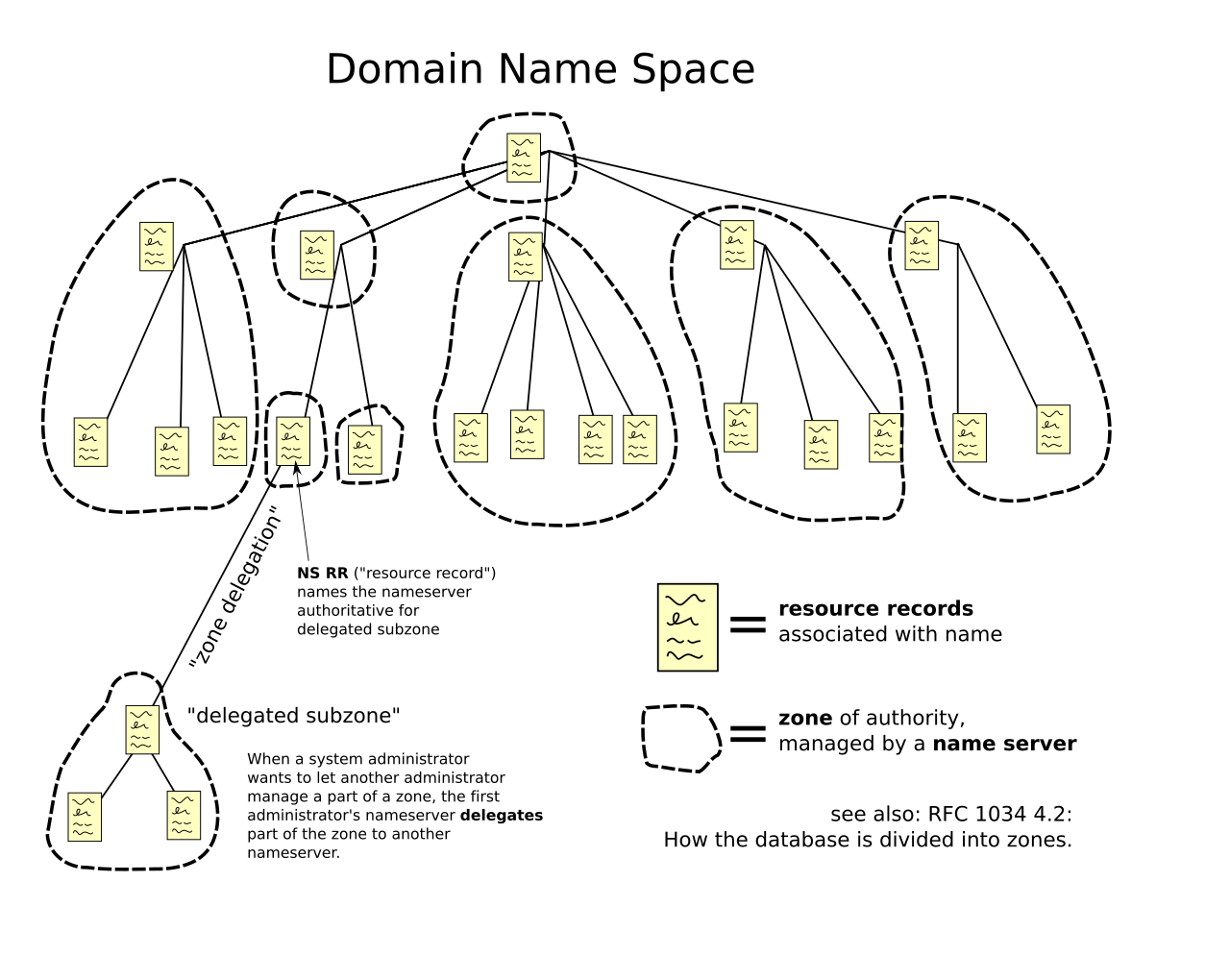The Domain Name System (DNS) is a hierarchical system that translates human-readable domain names, such as "example.com," into the numerical IP addresses used by computers to identify and communicate with each other on the Internet. DNS serves as a vital component of the Internet infrastructure, enabling users to access websites and other resources using familiar domain names. Here's an overview of DNS:
Domain Names
Domain names are user-friendly, text-based identifiers used to locate resources on the Internet. They consist of multiple parts separated by dots, such as "www.example.com." Each part, or label, represents a different level in the hierarchical structure of domain names.
DNS Hierarchy and Structure
- Top-Level Domains (TLDs): TLDs are the highest level in the DNS hierarchy. They include generic TLDs (gTLDs) like .com, .org, and .net, as well as country-code TLDs (ccTLDs) like .uk, .fr, and .jp.
- Second-Level Domains (SLDs): SLDs appear directly below the TLDs and form the main part of a domain name, such as "example" in "example.com."
- Subdomains: Subdomains are additional labels that precede the SLD, allowing for further categorization and organization of resources. For instance, "www" in "www.example.com" is a subdomain.
 |
| The hierarchical Domain Name System for class Internet, organized into zones, each served by a name server. Image source: Domain Name System - Wikipedia |
DNS Resolution Process
- DNS Resolver: When a user enters a domain name into a web browser, the DNS resolver (typically provided by the Internet Service Provider) initiates the resolution process.
- Recursive Queries: The resolver sends a recursive query to the DNS infrastructure, starting from the root DNS servers. These servers provide information about the authoritative name servers for the TLDs.
- Authoritative Name Servers: The resolver contacts the authoritative name server responsible for the TLD in the domain name, such as the ".com" TLD server.
- Recursive Name Resolution: The process continues recursively, moving from the TLD server to the authoritative name server responsible for the SLD, and potentially to subdomains until the IP address associated with the domain name is obtained.
- Caching: Once the resolver receives the IP address, it stores the information in its cache to expedite future queries for the same domain name.
DNS Records
DNS records are data entries stored in authoritative name servers that provide information about a domain. Common DNS record types include:
- A Record: Maps a domain name to an IP address.
- CNAME Record: Creates an alias for a domain name.
- MX Record: Identifies the mail servers responsible for a domain's email delivery.
- TXT Record: Stores arbitrary text data, often used for verification or configuration purposes.
DNS is a critical component of the Internet infrastructure, allowing users to access websites, send emails, and perform various online activities using domain names. It ensures efficient and reliable communication by translating human-readable names into IP addresses.
References
- Cloudflare: What is DNS?: https://www.cloudflare.com/learning/dns/what-is-dns/
- ICANN: Introduction to the Domain Name System: https://www.icann.org/resources/pages/dns-2014-01-29-en
- Verisign: How DNS Works: https://www.verisign.com/en_US/website-presence/online/how-dns-works/index.xhtml
- Cisco: Understanding How DNS Works: https://www.cisco.com/c/en/us/support/docs/ip/domain-name-system-dns/26334-understanding-how-dns-works.html
More From Author
Website Hosting